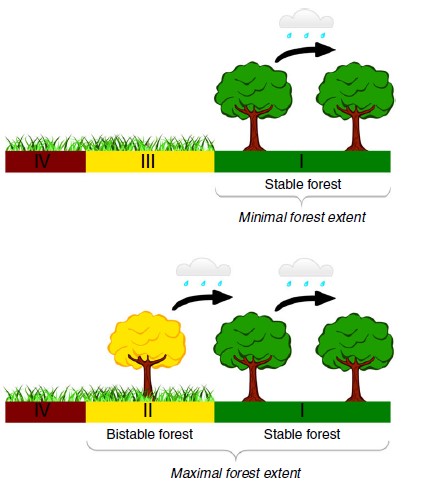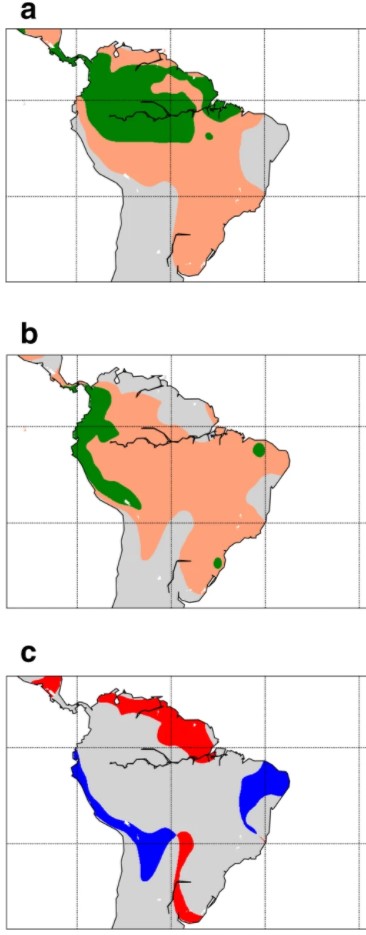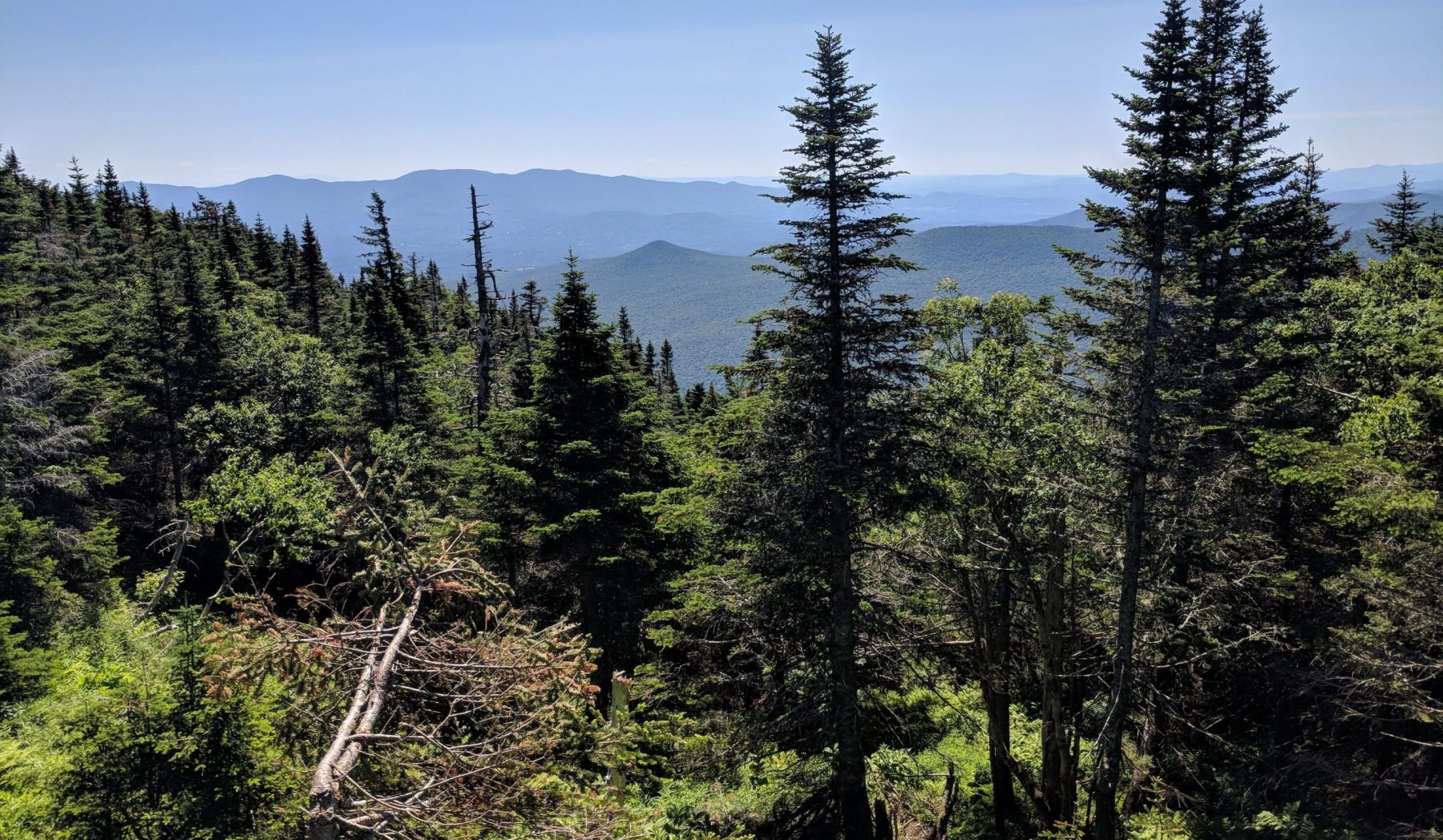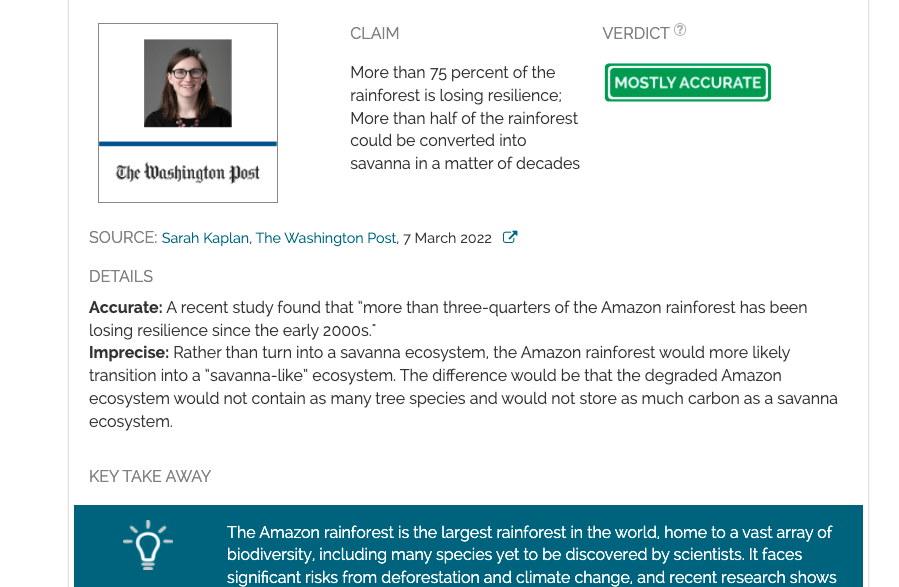- Climate
Climate change can make it harder for the Amazon rainforest to grow back from deforestation, but that does not mean 40% of it will now turn into a savanna
Key takeaway
Some Amazon forests occur in climates that can also support savannas, and this natural phenomenon is not recent. The stability of rainforests can be influenced, in part, by the ability of trees to regulate rainfall on a regional scale. If disturbed on a large scale, then, some rainforests might regrow as savannas. Severe climate change may result in some regions in the Amazon becoming increasingly unsuitable for rainforests, while other regions are predicted to become more suitable.
Reviewed content
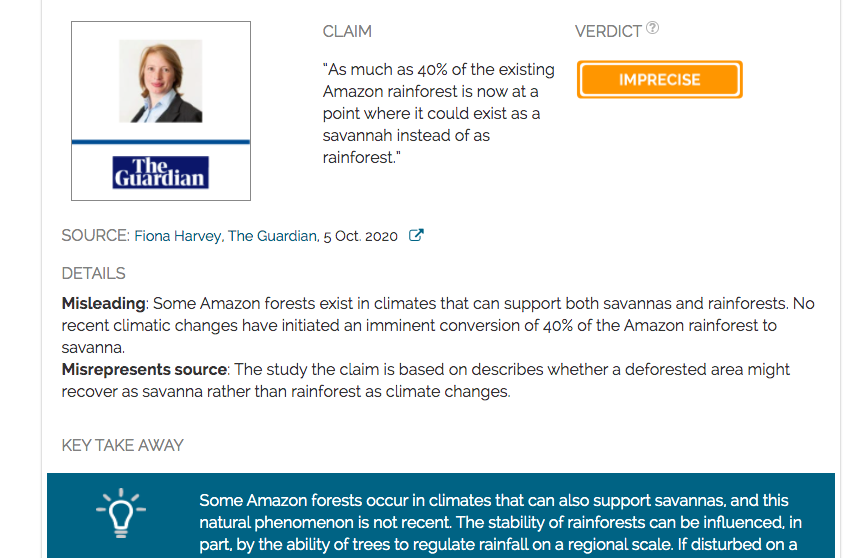
Verdict:
Claim:
“Amazon near tipping point of switching from rainforest to savannah”
Verdict detail
Misrepresents a complex reality: Some Amazon forests exist in climates that can support both savannas and rainforests. While it is possible that some Amazon forests may recover as savanna instead of rainforest after deforestation, this is a natural phenomenon that is not new.
Lacks specifics: The claim is supported by the study it is based on, but may be misunderstood by readers without sufficient context. The study describes whether a deforested area might recover as savanna rather than rainforest as climate changes. However, the study authors note in their paper that they overlook other components that may impact how a forest responds to climate change, such as the ability for trees to cope with water stress.
Full Claim
“Amazon near tipping point of switching from rainforest to savannah. As much as 40% of the existing Amazon rainforest is now at a point where it could exist as a savannah instead of as rainforest. Any shift from rainforest to savannah would still take decades to take full effect, but once under way the process is hard to reverse. Rainforests are highly sensitive to changes in rainfall and moisture levels, and fires and prolonged droughts can result in areas losing trees and shifting to a savannah-like mix of woodland and grassland.”
Review
The claims appeared in an article published by The Guardian on 5 October 2020, which has received more than 65,000 interactions on Facebook according to the social media analytics tool CrowdTangle. These claims are based on a study recently published in Nature Communications, which maps potential distributions of tropical forests based on recent and severe climate change models[1].
Specifically, the Guardian article claims, “As much as 40% of the existing Amazon rainforest is now at a point where it could exist as a savannah instead of as rainforest,” which can be misleading to readers without additional context as it might imply that 40% of the Amazon rainforest is currently at a tipping point. This statement does not appear in the study the article is based on[1]. Instead, the study examines how resilient forests are to deforestation in current and future climates.
In addition, this claim might incorrectly suggest that the Amazon rainforest did not have the possibility of existing as a savanna before. As described in the study, some forests in the Amazon occur in climates that can also host savannas[1]. The stability of forests is influenced by rainfall levels and the ability of forests to regulate rainfall at a regional scale through forest-rainfall feedback (see figure below). This feedback describes the process of trees extracting water from the soil and releasing it into the air through photosynthesis. When a forest is lost, the feedback is also lost, reducing rainfall. As a result, the vegetation that grows back can be different than what was present previously.
Figure—The forest-rainfall feedback affects the stability of forest distributions. Under high rainfall conditions, forests are stable (green). Under intermediate rainfall, land can exist as bistable forest, where it is either forest (yellow, bottom) or non-forest (grassland or savanna; yellow, top). Under low rainfall conditions, only non-forest exists (red). At a regional scale, the forest-rainfall feedback can impact the minimal (top) and maximal (bottom) extent of the forest. From Staal et al. (2020)[1].
The study explored how rainfall and rainfall-forest feedback affect forest resilience to recent climate (2003-2014) and late 21st century climate (2071-2100) under a severe climate change scenario (SSP5-8.5). Under severe climate change, the authors found, “an area of 1.91 million km2 changes from unsuitable to suitable (i.e. either stable or bistable) for forest, whereas an area of 2.37 million km2 changes from suitable to unsuitable,” (see figure below)[1].
This means that some current forests could convert to savanna after deforestation, particularly under future climate change. The article in The Guardian notes this when it says, “They also looked at what was likely to happen if greenhouse gas emissions kept rising, and found that the ability of forests to grow back once trees were lost would be much reduced.” But other statements in the article fail to make it clear that this is contingent on a deforestation event.
Figure—(a) Minimal (green) and maximal (beige) forest distributions under recent climate (2003-2014). (b) Minimal (green) and maximal (beige) forest distributions under severe climate in the late 21st century (2071-2100). (c) Changes in forest distribution between current and late 21st century climate. Red areas are suitable for stable forests under recent climate, but become unsuitable for forests in the late 21st century due to low rainfall levels. Blue areas are unsuitable for forests under recent climate, but become suitable for forests in the late 21st century due to higher rainfall levels. From Staal et al. (2020)[1].
While the Staal et al. (2020) study predicts potential changes in forest distribution in South America based on projected rainfall levels as well as rainfall-forest feedback, it also acknowledges limitations of their approach. For instance, the study does not account for other factors that might affect forest resilience to climate change, such as the ability of trees to cope with water stress, as the reviewers describe below[2-5].
The article in The Guardian also claims, “Any shift from rainforest to savannah would still take decades to take full effect, but once under way the process is hard to reverse,” and “Rainforests are highly sensitive to changes in rainfall and moisture levels, and fires and prolonged droughts can result in areas losing trees and shifting to a savannah-like mix of woodland and grassland.” While these statements might be correct, they were not explicitly explored in the study the article was based on[1]. As noted by the reviewers below, long-term experiments are needed to evaluate how the Amazon forest responds to environmental disturbances, such as low rainfall.
Scientists’ Feedback

Researcher, Utrecht University
As much as 40% of the existing Amazon rainforest is now at a point where it could exist as a savannah instead of as rainforest.
This statement is supported by our study, but it may cause misunderstanding[1]. The phrasing “is now at a point” might cause people to believe that part of the Amazon possibly existing as savanna was not the case before, and something has changed so that a transition could be imminent. That is not what we state in our study. The fact that some forests exist in a climate that can also support savanna is a natural phenomenon; while it does create the potential for large-scale switches to savanna, we don’t mean to say that 40% of the Amazon rainforest is on the brink of collapse. But again, the above statement in itself is not a false representation of our work.
Any shift from rainforest to savannah would still take decades to take full effect, but once under way the process is hard to reverse.
This is based on a statement that I gave to the Guardian in which I meant that in case a shift would occur at a particular location, the process would probably take a few decades. The words “full effect” might be understood as if the statement applies to large scales (such as 40% of the Amazon), which is stretching my original intention, although it could still be true. Here I should add that this statement goes beyond our present study – we did not investigate such time scales or trajectories. It is context that is based on existing (but uncertain) evidence in the literature. The second part of the sentence is fine. In summary, I would say that this statement is not false, but rather speculative.
Rainforests are highly sensitive to changes in rainfall and moisture levels, and fires and prolonged droughts can result in areas losing trees and shifting to a savannah-like mix of woodland and grassland.
A better phrasing would have been “Rainforests can be [highly] sensitive to…” or “Some rainforests are [highly] sensitive to…”. Other than that nuance, I consider the statement to be correct and consistent with our results. The resulting ecosystem will be distinct from natural savannas regarding biodiversity, but resemble them in structure.
In short, the devil is in the detail. These claims made in the Guardian are not false, but without proper context they can be prone to misunderstanding.

Executive Director and President, Earth Innovation Institute
The statement “As much as 40% of the existing Amazon rainforest is now at a point where it could exist as a savannah instead of as rainforest” is very misleading. It implies that something has changed—that rainfall is declining across the entire Amazon—when it has not. Dry season length and air temps have increased in parts of the eastern and SE Amazon, where deforestation is concentrated. We are not seeing big reductions in rainfall over the largely forested center and west of the Amazon.
The Staal et al. (2020) paper is simply pointing out something we have known for a long time. We find natural savannas (cerrados) and closed canopy forest across a large range of annual rainfall. The savannas of Alter do Chão, near Santarem (that captured international media attention last year when they caught fire) are there because of the sandy soil of that region. They are surrounded by tall, dense forests—with annual rainfall of about 2000 mm.
The Staal et al. (2020) paper has left land-use and fire outside of the study and is basically saying that climate-change-driven shifts in the boundaries between savanna and closed canopy forests move slowly and are shaped by the influence of the forest itself on evapotranspiration and rainfall patterns.
My own experiments have demonstrated that the Amazon forest is remarkably tolerant of drought and fire, partly because it is deeply-rooting and hard to burn[2,3,4]. Amazon forests can tap soil moisture stored to at least 12 meters depth. That is how they get through dry years. See this blog I wrote about these experiments.

Assistant Researcher, University of California, Los Angeles
First, I would like to say that the paper’s authors (Staal et al.) were very careful with the interpretation of their findings, always highlighting throughout the paper that the projections are a “first-order approach to provide useful insights”, and that they did not take into account other important factors affecting the distribution of tropical forests, specifically the ability of trees to cope with water stress by changing carbon allocation patterns and making adjustments to water-use efficiency due to increased CO2 and temperature. To run their models, the authors assumed all tropical forests are similar, i.e., their level of resilience to disturbance is the same, independent of distinct evolutionary histories[5], composition, and distribution of tree traits conferring resilience or resistance to strong disturbance events.
Specifically, about the claim published in The Guardian piece that “As much as 40% of the existing Amazon rainforest is now at a point where it could exist as a savannah instead of as rainforest“, I believe it is an oversimplification. To be fair, I did not find that statement in the paper. Although the climatic conditions may not be stable to support rainforests, drier areas within tropical America are currently covered by tropical dry and transitional forests; most importantly, tropical dry forests actually occur in drier areas than savannas in South America[5,6].
The other claims: “Any shift from rainforest to savannah would still take decades to take full effect, but once under way the process is hard to reverse,” and “Rainforests are highly sensitive to changes in rainfall and moisture levels, and fires and prolonged droughts can result in areas losing trees and shifting to a savannah-like mix of woodland and grassland.” Yes, any shift will take decades to take effect, but it is not really clear for me why bi-stable states are not possible to be maintained in the paper’s modelling approach if one takes into account the other important factors mentioned above shaping the resilience of tropical forests. There are still open questions on the mechanisms driving changes in tropical forests in response to multiple stressors (such as climate change, fire and deforestation).

University Lecturer, University of Cambridge
The Staal et al. article raises interesting questions about the resilience (i.e., ability to recover from a disturbance) of tropical rainforests. Ultimately, however, we need experimental tests of the ability of forests to recover from extreme perturbations by drought and fire, which can take years to produce meaningful results. Consequently, we are left with much uncertainty about how tree communities may respond to a changing climate: species better equipped to tolerate drought and fire may colonize, and physiological adaptations like resprouting could assist in tree recovery (to just name a few factors). Undoubtedly trees will die in the future, and tropical forests are especially vulnerable to drought and fire; however, we know from fire experiments in savannas that when fire is excluded, forests can regrow, and they do so on the order of decades. Whether the ability of forests to regrow after fire will be hampered by climate change remains the golden question.
UPDATES
- 16 Oct. 2020: The details of this post were updated to clarify that the article is not misleading, but some statements could be misinterpreted by readers without additional context.
REFERENCES
- 1 – Staal et al. (2020) Hysteresis of tropical forests in the 21st century. Nature Communications.
- 2 – Nepstad et al. (1994) The role of deep roots in the hydrological and carbon cycles of Amazonian forests and pastures. Nature.
- 3 – Nepstad et al. (2007) Mortality of large trees and lianas following experimental droughts in an Amazon forest. Ecology.
- 4 – Balch et al. (2015) The susceptibility of Southeastern Amazon Forests to fire: Insights from a large-scale burn experiment. BioScience.
- 5 – Segovia et al. (2020) Freezing and water availability structure the evolutionary diversity of trees across the Americas. Science Advances.
- 6 – Dexter et al. (2018) Inserting tropical dry forests into the discussion on biome transitions in the tropics. Frontiers in Ecology and Evolution.

